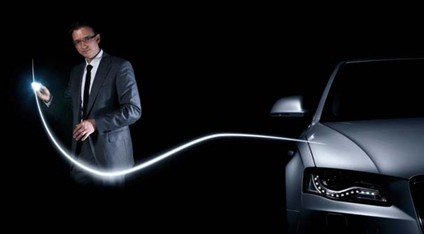At present, the global traditional automotive light source lighting accounts for about 10% of the total output of the entire lighting source. Before the general lighting LED technology was mature, the automotive market was the most promising LED lighting segment. In 2010, after the EU and other countries announced that new cars must be equipped with daytime running lights and a total ban on incandescent lamps, the demand for LED lights and main lighting continues to rise.
Prior to this, automotive interior lighting applications, LED backlighting and interior lighting have become popular. Automotive external applications have been developing over the past few years. Most of the European, American, Japanese and Korean automobile brands have applied LEDs in brake lights, taillights, turn signals, reversing lights, high-position brake lights, etc., among which brake lights and tail lights are also used. There are large applications for high brake lights. As a vehicle headlight illumination, due to the need for high-power LEDs, it is subject to technology and LED cost-effectiveness, especially in the fields of optics, electronic control, and thermal management. Currently, it is only applied on some luxury high-end models. . Automakers in the industry believe that HID lamps will still be the mainstream application of headlamps in the short term.

LEDs have begun to emerge in automotive lighting
At present, the main growth driver of LED in the automotive market is to replace the original indicator light and bulb lighting. If a car is replaced with LEDs, it is estimated that more than 300 LEDs are needed. In 2010, the total production and sales volume of Chinese automobiles is expected to exceed 15 million, of which the production of passenger cars will reach 12 million. GLII believes that automotive LEDs will become the main market for LEDs within three years. Only the domestic new car market will have an annual output value of about 1 billion yuan. After that, the market will grow rapidly with the breakthrough of LED technology. At present, in the new car LED market, foreign traditional lighting giants Osram, Philips and some Japanese manufacturers occupy a monopoly position. In a short period of time, domestic LED lighting manufacturers are difficult to squeeze into this high-end market, but there are also many testers. At present, domestic automakers mainly adopt two modes for industrial extension: one is BYD's typical vertical integration. At present, most of BYD's LED lights are supplied by themselves; the second is represented by Chery, 2010 4 Yuerui and Wuxi Anrui Optoelectronics Co., Ltd., a joint venture with domestic LED chip manufacturer Sanan Optoelectronics Co., Ltd., are mainly engaged in automotive lighting.
Another potential market for LED automotive lighting is the automotive aftermarket. Due to the lack of strict requirements for product quality and performance of OEMs, the future car market in China has more than 70 million vehicles, and small and medium-sized LED lamp manufacturers will have strong price competitiveness.

Lithium Battery Cell is the core part of a Lithium Battery Pack, both LiFePO4 and NMC, which are widely used in energy storage system (ESS) and electric vehicle(EV) with the help of a sophisticated battery management system (BMS).
Lithium Battery Cell
Lithium Battery Cell,Lithium Ion Rechargeable Battery,Polymer Battery,Lithium Ion Polymer
FORZATEC CO., LIMITED , http://www.forzatec.com